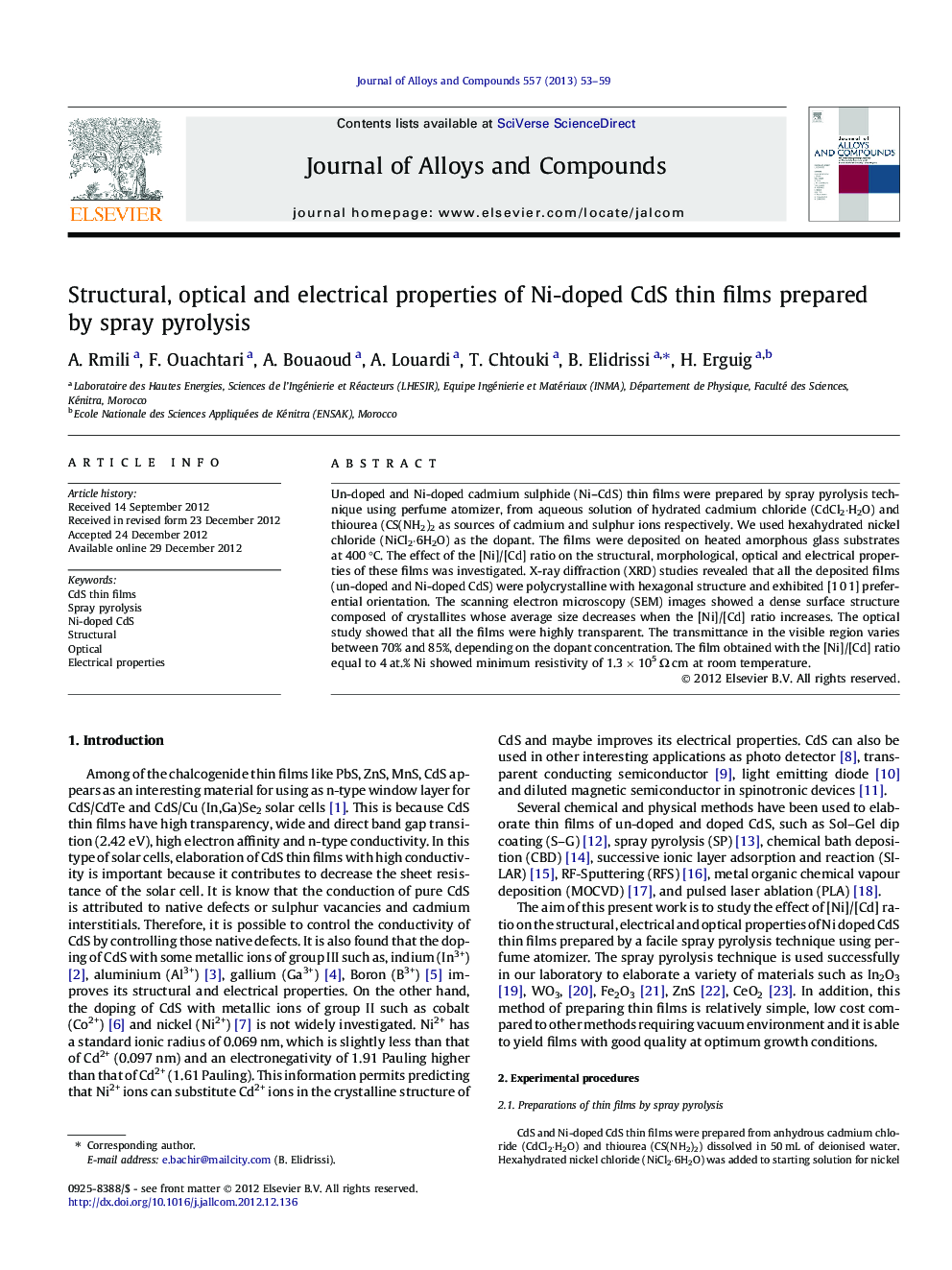| Article ID | Journal | Published Year | Pages | File Type |
|---|---|---|---|---|
| 1614544 | Journal of Alloys and Compounds | 2013 | 7 Pages |
Un-doped and Ni-doped cadmium sulphide (Ni–CdS) thin films were prepared by spray pyrolysis technique using perfume atomizer, from aqueous solution of hydrated cadmium chloride (CdCl2⋅H2O) and thiourea (CS(NH2)2 as sources of cadmium and sulphur ions respectively. We used hexahydrated nickel chloride (NiCl2⋅6H2O) as the dopant. The films were deposited on heated amorphous glass substrates at 400 °C. The effect of the [Ni]/[Cd] ratio on the structural, morphological, optical and electrical properties of these films was investigated. X-ray diffraction (XRD) studies revealed that all the deposited films (un-doped and Ni-doped CdS) were polycrystalline with hexagonal structure and exhibited [1 0 1] preferential orientation. The scanning electron microscopy (SEM) images showed a dense surface structure composed of crystallites whose average size decreases when the [Ni]/[Cd] ratio increases. The optical study showed that all the films were highly transparent. The transmittance in the visible region varies between 70% and 85%, depending on the dopant concentration. The film obtained with the [Ni]/[Cd] ratio equal to 4 at.% Ni showed minimum resistivity of 1.3 × 105 Ω cm at room temperature.
► We prepared Ni–CdS thin films by a facile spray pyrolysis using perfume atomizer on glass substrate. ► We studied the effect of [Ni]/[Cd] ratio on the structural, morphological, optical and electrical properties of Ni-doped CdS thin films. ► CdS thin films doped with 4% Ni showed high transmittance of about 80% in the visible and near infrared regions, and relatively low resistivity of 1.3 × 105 Ω cm.
